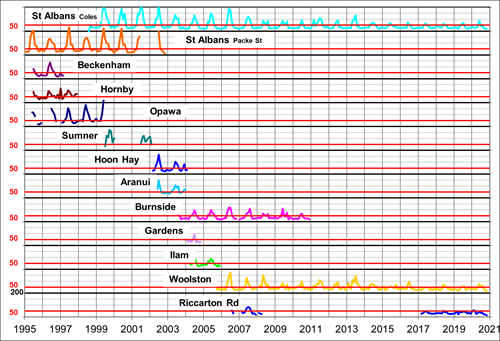In Christchurch, most of the PM is from the burning of wood for home heating. Other outdoor sources of PM are motor vehicles, industrial and commercial processes, and natural sources. PM concentrations are typically highest during winter evenings, when temperatures are coldest and there is little wind.
Most of the emissions of nitrogen oxides (NOx) are from traffic and industrial sources.
Seasonal variation
- Show wind speed
- Show temperature
PM10 |
PM2.5 |
Wind speed (km/h) |
Air temperature (℃) |

